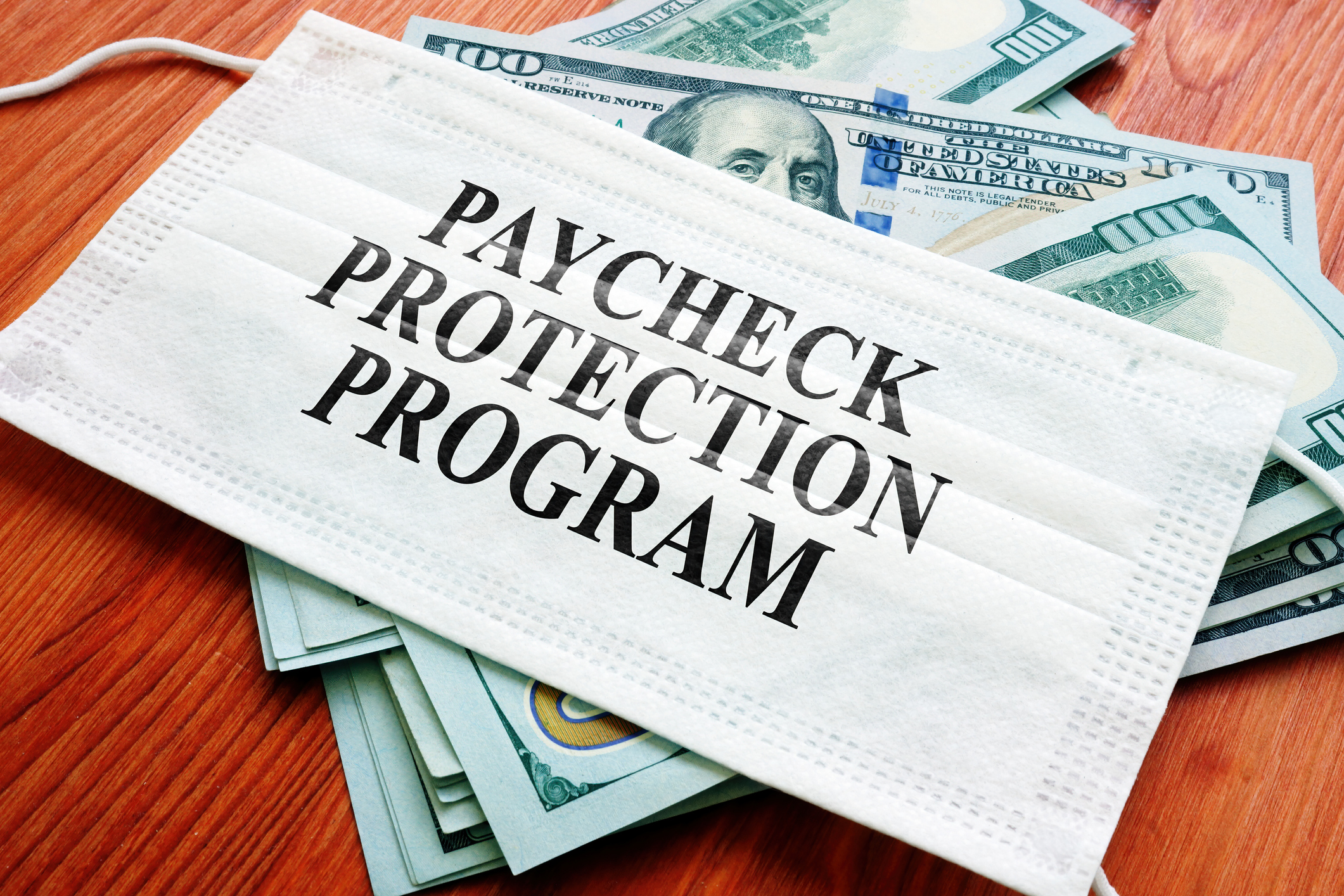The Employee Retention Credit has been a hot topic for businesses recently, and you’ve probably heard about it but still have some questions. So, what is the ERC? The Employee Retention Credit (ERC) is a refundable payroll tax credit filed against employment taxes. ERC was introduced with the Coronavirus Aid, Relief and Economic Security (CARES) Act in 2020 during the COVID-19 pandemic to help businesses recover from the economic fallout that occurred.
It essentially provides funding to businesses to make up for some revenue lost during the pandemic. Some companies might even argue that the ERC has been their lifeline post-COVID-19, enabling them to retain critical employees and continue business operations.
The ERC has been amended three separate times after it was originally enacted as part of the CARES Act by the Taxpayer Certainty and Disaster Relief Act of 2020 (Relief Act), the American Rescue Plan (ARPA) Act of 2021 and the Infrastructure Investment and Jobs Act (IIJA).
Credit from the ERC can potentially reach up to $28,000 per employee for 2021. It essentially rewards companies that had employees on payroll during the pandemic. Since the United States government orders created restrictions that financially affected businesses, this is a way of compensating those impacted businesses.
Key Takeaways
- The ERC was established as part of the CARES Act and extended as part of the American Rescue Plan Act.
- The ERC is a fully refundable tax credit that was set up by the government as a result of the COVID-19 pandemic.
- Though the ERC program officially concluded at the end of November 2021, you can still file.
- ERC guidelines allow eligible businesses to receive a credit of anywhere from $5,000-$26,000 per employee for 2020 and 2021.
- If your business suffered within the last few years during the pandemic, you most likely will qualify to file.
- Notice that the ERC is a payroll tax credit, not an income tax credit. Therefore, it must be reported on Form 941.
- Businesses that received Paycheck Protection Program loans may still qualify for the ERC.
We assist you with forms like these to help ensure your information is accurately filled out. We also guarantee total transparency during this process while providing filing guidance for your business.
Partnering with us can save you time and effort when filing for your ERC. Contact us to get started and file for the Employee Retention Credit.
How Was This Refundable Tax Credit Established?
Because many businesses faced economic decline during the pandemic, the U.S. government passed the ERC as an opportunity for businesses to get funded for lost revenue. It encouraged employers to keep their employees on the payroll, even if they were not working during COVID-19.
The goal was to sustain the economy during the coronavirus pandemic. Congress voted to pass a $1.9 trillion relief bill so that businesses could benefit. The IRS initially predicted that 70 percent of businesses would claim the Employee Retention Credit.
In the early stages of ERC under the CARES Act, not as many businesses were able to qualify as Congress intended, due in part to an inability to meet the requirements for sharp revenue declines. Businesses found ways to adapt and sustain revenues at only marginally lower levels than before. Expansions of the ERC became necessary to achieve the intended benefit for more businesses.
The Families First Coronavirus Response Act was passed at the same time as the CARES Act. Many employers can qualify for both ERC and the FFCRA.
Since March 2020, the ERC program has undergone many changes. With them came questions from both businesses and tax professionals. The Internal Revenue Service (IRS) responded with clarifying guidance on frequently asked questions, clearing a path for businesses and their tax partners to claim accurate benefits with confidence.
Benefits of the Employee Retention Credit
The Employee Retention Credit has helped keep many businesses stay afloat and bolstered the finances of others, especially small companies. Here are a couple of added benefits of the program:
1. You can reinvest the Employee Retention Credit funds to hire new staff members.
Employee retention rates suffered due to the COVID-19 pandemic. Whether through layoffs or changes in workforce dynamics, employers were understaffed. The Employee Retention Credit provides them with additional cash flow in the form of a tax credit, which can be used to bring back staff and hire new employees.
2. If you received funds from the Paycheck Protection Program, you might still qualify for the Employee Retention Credit.
When the Employee Retention Credit was first announced by the U.S. government, businesses that received a Paycheck Protection Program (PPP) loan weren’t eligible for an Employee Retention Credit. However, through the Consolidated Appropriations Act of 2021, eligible businesses that received a PPP loan can now retroactively apply for the ERC. The only caveat is that you cannot include wages for ERC purposes if the wages were paid with forgiven PPP loan proceeds. Wages in excess of PPP loan proceeds may still qualify for the ERC.
Who Qualifies for the ERC?
Your business may be eligible for the ERC if its operations were fully or partially suspended by governmental COVID-19 orders, thereby limiting commerce, travel, or group meetings. You might also be eligible if your business experienced a significant decline in gross receipts during 2020 or within the first three quarters of 2021. New startup businesses that began operations after February 15, 2020, may also qualify, regardless of revenue.
There are two main ways to be eligible for stimulus refunds:
1) Employers are eligible for ERC if they match the required decline in revenue within any quarter of 2020 or 2021.
2) Employers are eligible if they have W-2 employees.
Up to $5,000 can be credited per employee from March 13, 2020, to Dec. 31, 2020, as well as up to $21,000 per employee between the period of Jan. 1, 2021, to September 30, 2021. Depending on how large your company is, you could earn up to six or seven figures back in funding. Eligibility can be determined by electing to use the immediately preceding calendar quarter.
How Much Money Will Your Business Receive From the ERC?
How much your business receives from an Employee Retention Tax Credit varies based on qualified wages paid and the number of employees your business had in 2019, 2020, and 2021. The forgiveness of PPP loans may also impact your credit. Here’s a year-by-year breakdown of the ERC program:
- 2020 ERC: A credit of 50 percent of the wages paid — up to $10,000 per employee from March 12 – December 31, 2020 (capped at $5,000 per employee).
- 2021 ERC: A quarterly tax credit of 70 percent of the first $10,000 in wages per employee in each quarter of 2021 from January to September 2021 (credit capped at $7,000 per employee per quarter or 70 percent of $10,000).
How Do I Claim the Employee Retention Tax Credit?
If you have an eligible business, you can retroactively claim the ERC for 2020 and 2021. How? By filing IRS Form 941-X to amend your filed returns (Form 941) for the quarters during which your business was an eligible employer.
If you’re filing for the Employee Retention Credit, make sure your Form 941 for 2020 and 2021 was filed, received, and processed by the IRS before you file Form 941-X. Unlike Form 941, Form 941-X cannot be filed electronically. Before you claim the credit, make sure you have the following data:
- Payroll journal data
- Personal information (including Employer Identification Number)
- Prior years’ tax returns
- Copies of Form 941 filed for each quarter you plan to claim the Employee Retention Tax Credit
Deadline for Claiming Employee Retention Credit
The ERC program has technically ended, but eligible employers still have time to claim the Employee Retention Credit. How? By filing a Form 941-X for relevant quarters to amend previously filed forms.
You may correct underreported taxes on a previously filed Form 941 if you file Form 941-X within three years of the date Form 941 was filed. Each of these time frames is called a “period of limitations.” For purposes of the period of limitations, Forms 941 for a calendar year are considered filed on April 15 of the succeeding year if filed before that date.
Example:
You filed your 2020 second-quarter Form 941 on July 20, 2020, and all payments were made on time. The IRS treats the return as if it was filed on April 15, 2021. On March 1, 2023, you discovered that you overreported social security and Medicare wages on that form as a result of neglecting to claim the ERC.
To correct the error and claim your credit, you must file Form 941-X by April 15, 2024, which is the end of the three-year period of limitations for Form 941, and you must use the claim process. Once you’ve confirmed that the IRS has received your completed 941-X, you’ll be able to track the status of your rebate.
I Received a PPP Loan – Can I Still Apply?
Businesses that received Paycheck Protection Program (PPP) funding are still eligible to file for Employee Retention Credit. In fact, ERC funds can be more than funds received from the PPP loan forgiveness. Even non-essential businesses are eligible to receive funding. Therefore, PPP loans from 2020 or 2021 do not affect a business’ eligibility.
Small employers with a number of full-time employees under 500 are eligible to receive ERC payments during the calendar quarter when wages are paid out. Part-time and seasonal employees do count as part of this number. The fewer full-time employees in your organization, however, the less funding you are eligible to receive back. Total credit is calculated based on the total number of employees.
How Do I Qualify?
Many industries faced a decline during the pandemic. If your company’s gross receipts were 50 percent lower in a certain quarter than they were in the same quarter of 2019, pre-Covid-19, your business qualifies to file for ERC. Since there have been several changes within the last year regarding Employee Retention Tax Credit, many businesses are disqualifying themselves based on rumors, when in reality, they could very well qualify.
If your business has faced any of the below during 2020 or 2021, you may qualify:
- Full or partial shutdown by a governmental authority limiting commerce
- Significant decline in sales
- Full or partial suspension in business
- Supply chain or distribution interruption
- Inability to access equipment
- Interrupted operations
- Reduction in operation hours
- Reduction in customer & client interaction
- Switching hours for sanitation reasons
- Faced decrease in providing services
If your business belongs to one of the following industries, you could qualify for credits:
- Education – colleges and universities
- Non-Profit or tax-exempt organizations
- Government
- Hospitality and Retail
- Industrial
- Real Estate and Construction
- Technology
Both essential and non-essential businesses are eligible for the payroll tax credit. All businesses were forced to adapt to safety restrictions and even faced a partial shutdown due to the pandemic. The Employee Retention Tax Credit (ERC) is the government’s way to give back to businesses and essentially reward them for keeping employees on the payroll, even if these employees were forced not to work.
Conclusion
If you’re considered an eligible employer according to the ERC program, don’t miss the opportunity to get a tax credit from the government. Applying for the Employee Retention Credit might sound difficult and time-consuming, but investing in the services of tax experts like those at StenTam can help you maximize the amount of your business’s credit. Learn more today!
FAQ
Are ERC Refunds Taxable?
Although the Employee Retention Tax Credit is considered tax-exempt income on the federal income tax return, it is subject to expense disallowance rules. Therefore, you must reduce your wage deduction by the amount of the credit received. If you are filing a claim for the ERC on an amended Form 941-X, you may be required to file an amended income tax return for the applicable year.
Does the Employee Retention Credit Have to Be Paid Back?
Your Employee Retention Credit is not a loan or an advance and does not have repayment terms.
What Are Considered Wages Paid Under the Employee Retention Credit?
Qualified wages under the Employee Retention Tax Credit consist of those paid by employers to employees while operations were fully or partially suspended by governmental COVID-19 orders or during the period in which the business experienced a decline in gross receipts.
Covered qualified wages include cash wages, both hourly and salaried, along with vacation pay and any other taxable wages. Qualified wages under the Employee Retention Tax Credit program also include certain health plan expenses allocable to those wages.
Qualified wages under the Employee Retention Tax Credit program are limited to the first $10,000 of compensation paid to any employee during a calendar year (2020) or calendar quarter (2021) and can be claimed for wages paid or incurred from March 13, 2020, through December 31, 2021. There are some restrictions on the fourth quarter of 2021 if you are not a recovery startup business.
Why Is Working With Us the Best Way to File for ERC?
Hopefully, now you can confidently say you are more familiar with ERC. But, if you are not very familiar with how to file for Employee Retention Credit, you’re in good hands with StenTam. Our job is to maximize the credit you receive and minimize any risks that come with it.
It’s no secret that there are a lot of logistics that go into filing for your business’ ERC. That’s where we come in. We handle finance on a regular basis, so let us be the experts and we’ll make sure your business receives the maximum credit. We can help uncover all funding opportunities your business qualifies for, get a quote for your claim, and begin filing for your credit.
Here at StenTam, we pride ourselves on having assisted many businesses, both large and small, in filing for the Employee Retention Credit. We have experience collaborating with business owners to ensure they receive maximum credit for each calendar year. It’s safe to say that we are confident in what we do and would be proud to be your ERC partner.














